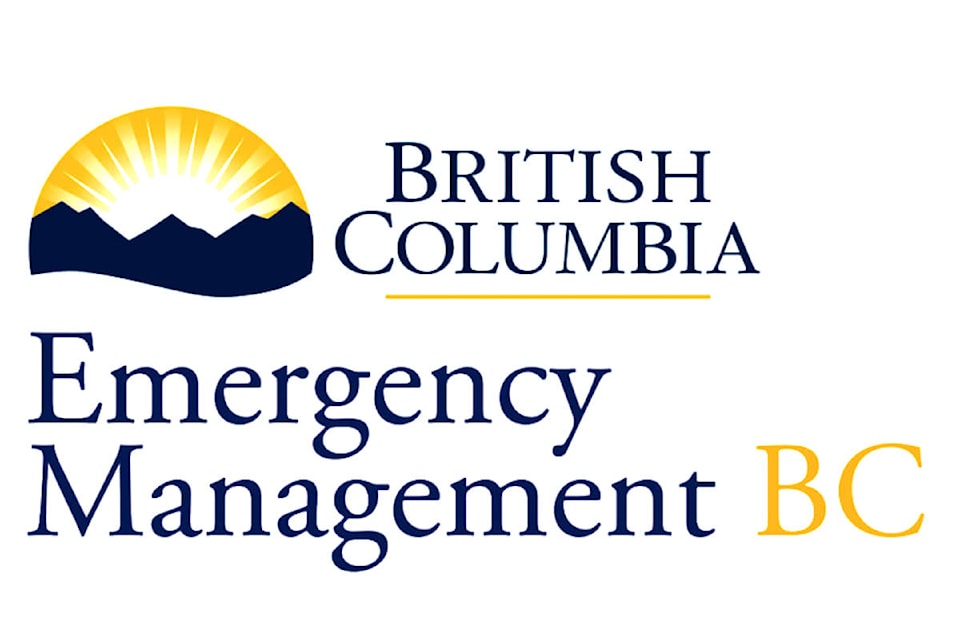Emergency Management BC
VICTORIA - There are plenty of opportunities for unforgettable winter experiences throughout British Columbia, and Minister of Public Safety and Solicitor General and Minister Responsible for Emergency Preparedness Mike Farnworth is urging all outdoor enthusiasts to make safety their top priority.
Recent weather has increased the risk of avalanches in parts of the province, and conditions are continuously evolving. Anyone exploring the trails, mountains and backcountry areas of British Columbia must be prepared to take care of themselves and their companions with suitable equipment, first-aid supplies and an awareness of the risks. The following safety tips are strongly recommended:
* Never travel alone.
* Planning ahead is a must. Before heading outdoors, leave a trip plan with family or friends and stick to that plan. For a printable copy of a trip plan, visit: www.adventuresmart.ca/tripplanning/planning.htm
* Be prepared for the elements with the essentials such as extra water, layers of clothing, a shelter and something to start a fire with for warmth overnight: www.adventuresmart.ca/land/survive-essentials.htm
* Carry a signaling device (such as a whistle) so that searchers can find you even if they can’t see you, as well as communication and navigation devices like a fully charged cell phone, compass and/or GPS unit.
* Don’t venture out of bounds or off marked trails.
* Be aware of how far you’ve gone and when you need to turn back to avoid hiking in the dark. Be aware of the time for sunset, and always carry a flashlight, just in case.
* If you become lost, don’t keep moving. Stay put and wait for help. Don’t presume by moving downhill that you will get back on track, as this can lead you into dangerous terrain.
* Take the conditions into account and plan appropriately. Learn more about avalanche safety and risks, and get the most recent bulletin and weather forecast at: www.avalanche.ca
* Everyone in a backcountry party needs to be equipped with a shovel, probe and transceiver. More information on safety equipment is available at: www.avalanche.ca/gear
* For real-time, location-specific information on conditions, visit the Mountain Information Network at: www.avalanche.ca/mountain-information-network
Staying Warm
Avoid hypothermia by remembering the acronym COLD:
* Cover: Wear a scarf, hat or toque, mittens or gloves and even a balaclava if necessary.
* Overexertion: Avoid activities that will make you sweat a lot. The combination of wet clothing and cold weather can cause you to lose body heat more quickly.
* Layers: Wear loose-fitting, layered, lightweight clothing. Wool or silk are great choices. Outer clothing made of tightly woven, water-repellent material is best for wind protection.
* Dry: Get out of wet clothing as soon as possible. Be especially careful to keep your hands and feet dry, as it’s easy for snow to get into mittens and boots.
You should also know the signs of hypothermia. They include constant shivering, confusion, poor decision-making (such as trying to remove warm clothes), drowsiness and shallow breathing. More information is available from the Canadian Red Cross: http://ow.ly/W7gK307cqCW
Learn More:
PreparedBC is British Columbia’s one-stop shop for disaster readiness information. For tips on how to prepare an emergency plan and what to include in an emergency kit, visit PreparedBC: www.gov.bc.ca/PreparedBC
For tips on how to stay safe, follow on Twitter at:
Emergency Management BC: @EmergencyInfoBC (https://twitter.com/EmergencyInfoBC)
And, Avalanche Canada at: @avalancheca (https://twitter.com/avalancheca)
